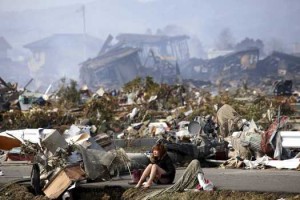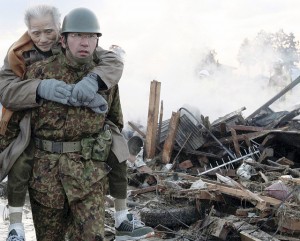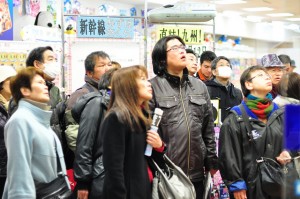Live-Blogging a Book, and the Earthquake
I don’t know if makes sense to blog on a book by a woman who’s dead, who wrote about photographs and the news. But new media allows us to try new things, unedited. Here goes:
In Regarding the Pain of Others, which I began, unknowingly, on the evening before the recent quake and tsunami, Sontag begins Chapter 2:
Being a spectator of calamities taking place in another country is a quintessential modern experience <she refers mainly to war photography>…’If it bleeds, it leads’ runs the venerable guideline of tabloids and twenty-four-hour headline news shows – to which the response is compassion, or indignation, or titillation, or approval, as each misery heaves into view.
This observation, published in 2003, would account for CNN’s sending so much of its lead staff – Anderson Cooper, Dr. Sanjay Gupta, Soledad O’Brien and others – to northeastern Japan now. Some of us are drawn to the images of devastation, and these do sell.

The author continues, later:
…But there is shame as well as shock at looking at the close-up of a real horror. Perhaps the only people with the right to look at images of suffering of this extreme order are those who could do something about it – say, the surgeons at the military hospital…or those who could learn from it. The rest of us are voyeurs, whether or not we mean to be…
So maybe (as she sees it, in Chapter 2) it’s OK to look at the images if there’s a good reason to do so – for examining how others cope with a catastrophe by distributing food in limited amounts in orderly lines in order to learn, for example; or for demonstrating which structures withstood the quake and flood, which breezed over the seawall; or for planning the location and cooling protocols for nuclear reactors elsewhere…Also, quite plainly, the images may serve to raise money and needed support for the devastated region.

Back to medicine – today, people are quite familiar with images of sick people. There are open, on-line communities of people sharing heartache and complications, sometimes with wrenching images. TV and the movies familiarize us with catastrophes to such a degree they may seem ordinary or unimportant. We’re desensitized, I fear, in which case the news audience’s attention is strangely reassuring.

Maybe the people who are looking at the pictures are doing so because they really care about the people in northeast Japan. Or maybe it’s because they’re wondering – could this happen to me, all of a sudden, in the middle of an ordinary day, i.e. do I need to worry about this? Or both.
—
Leave a Reply